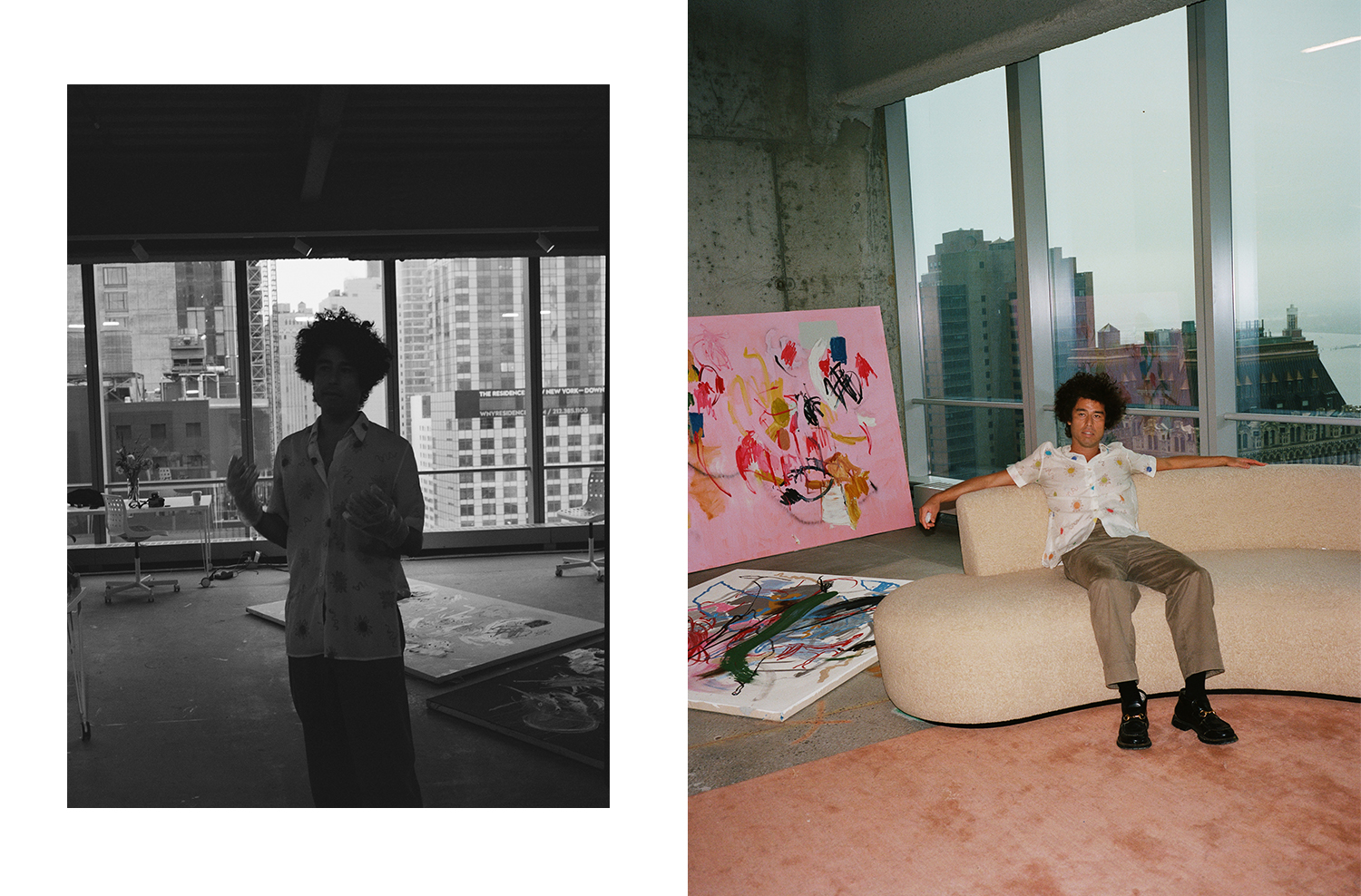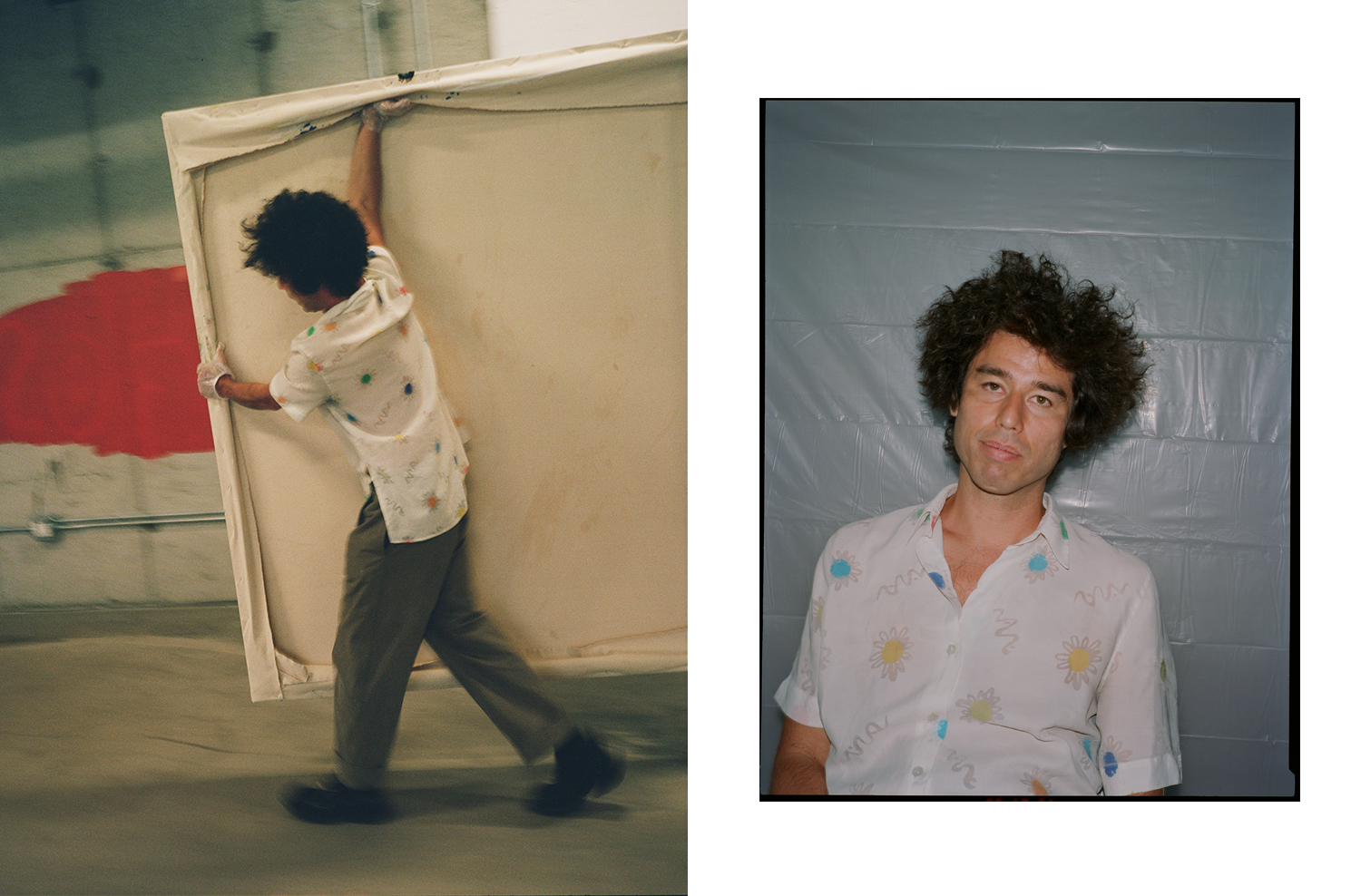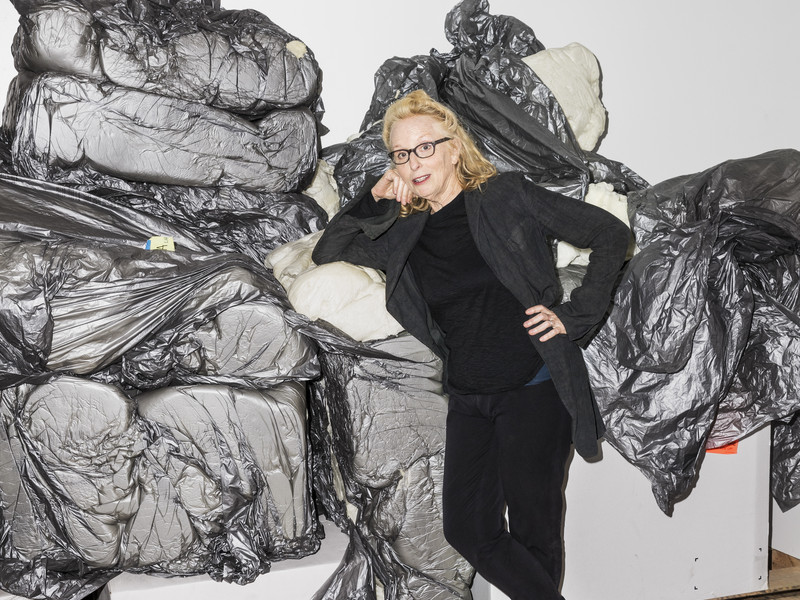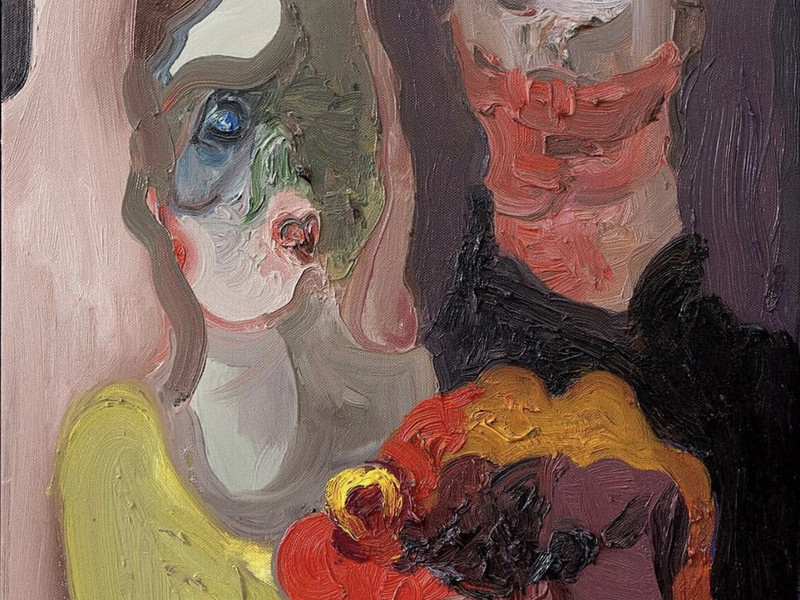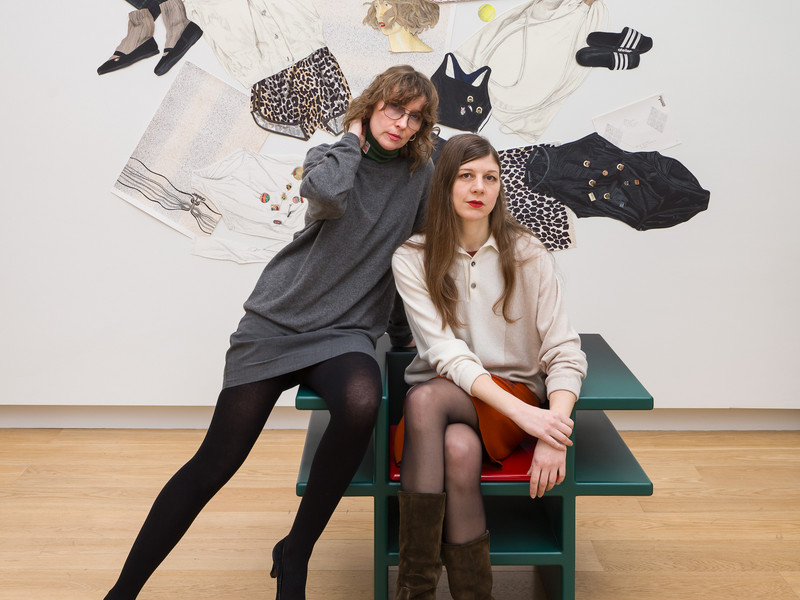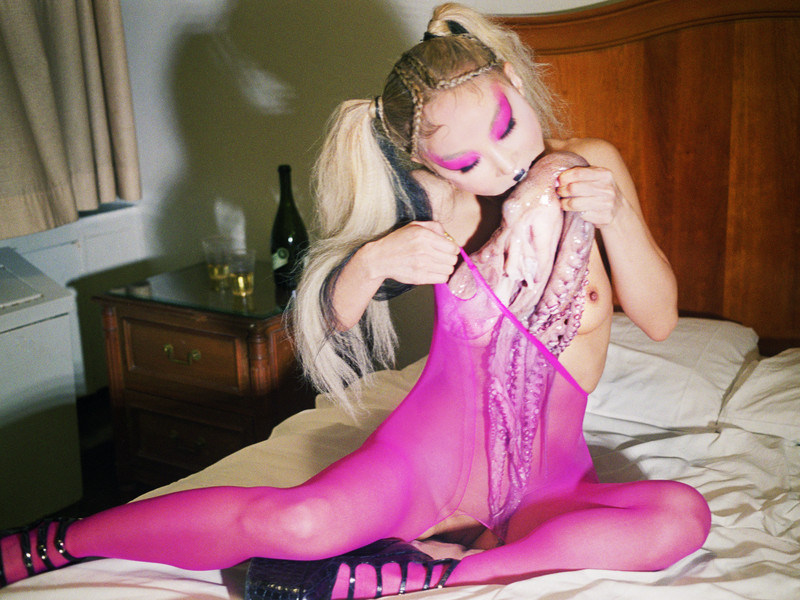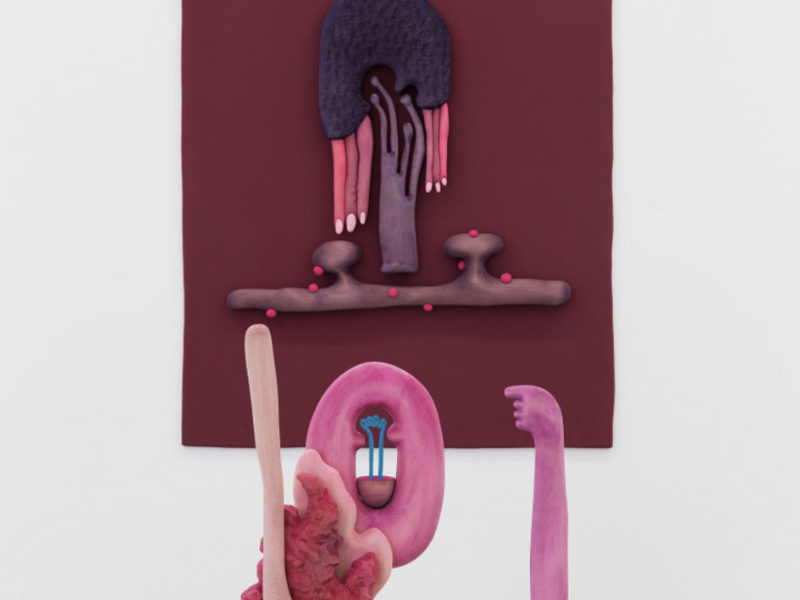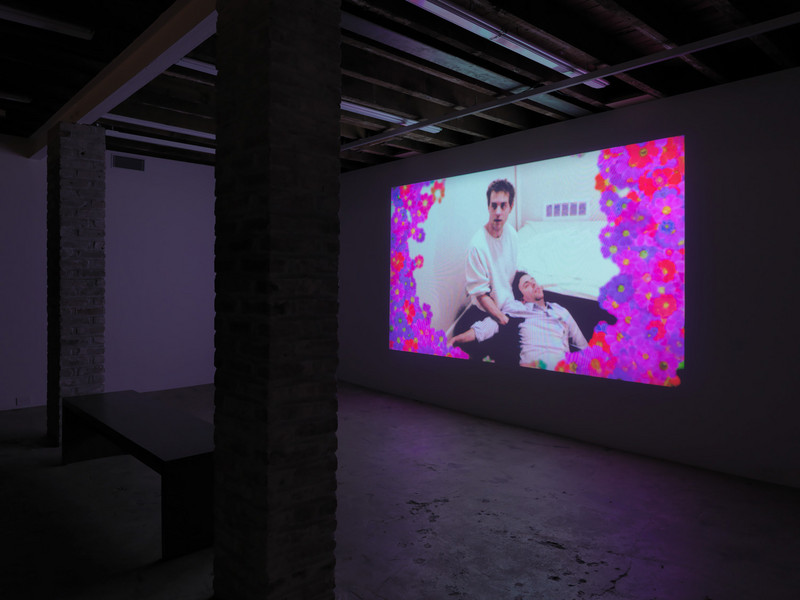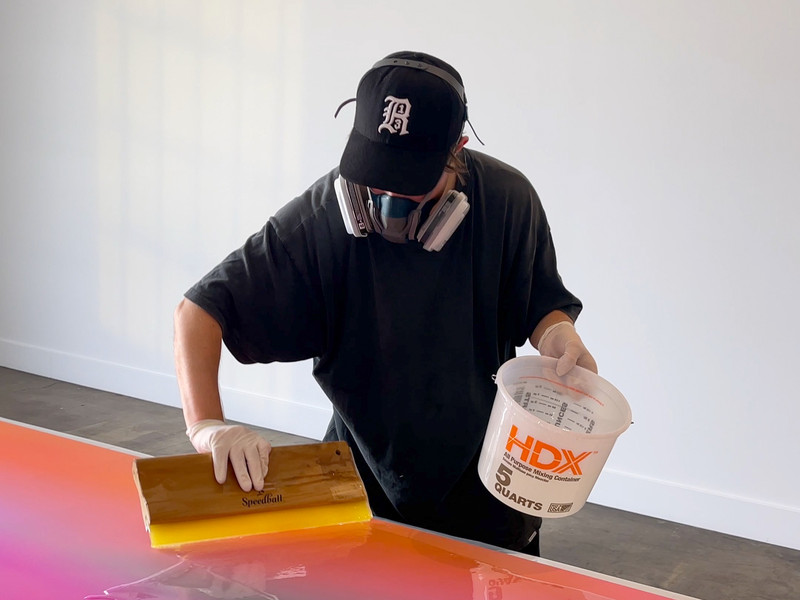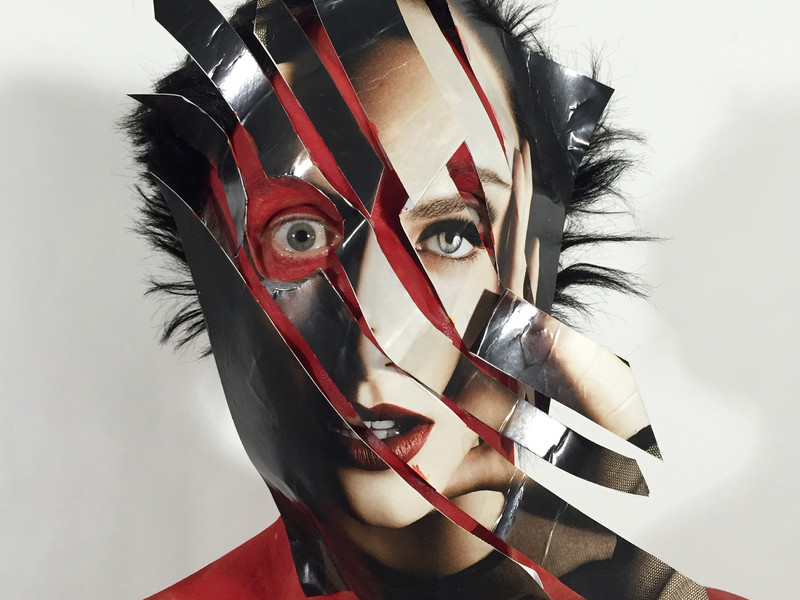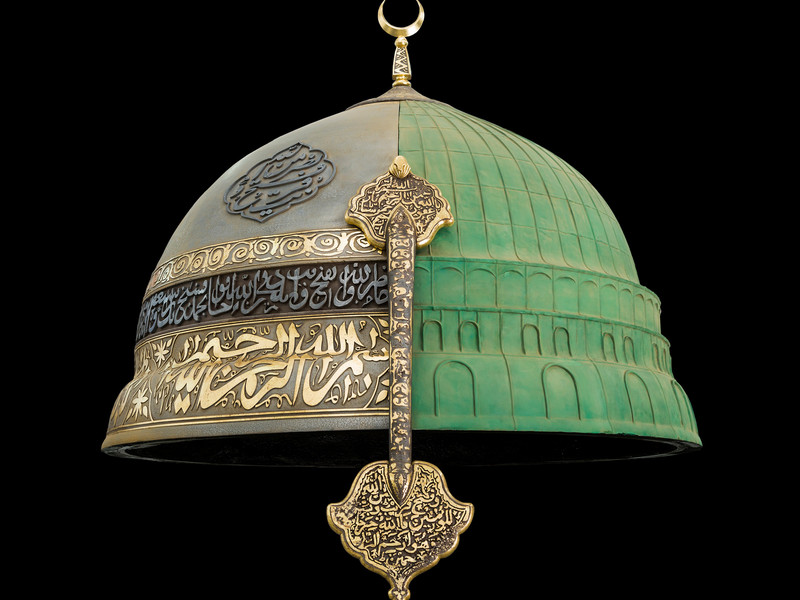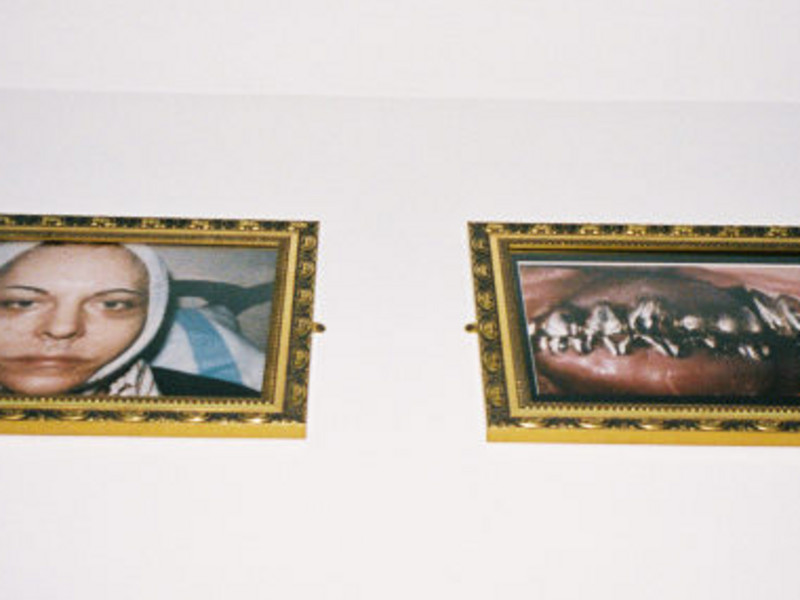The Art of Tenderness
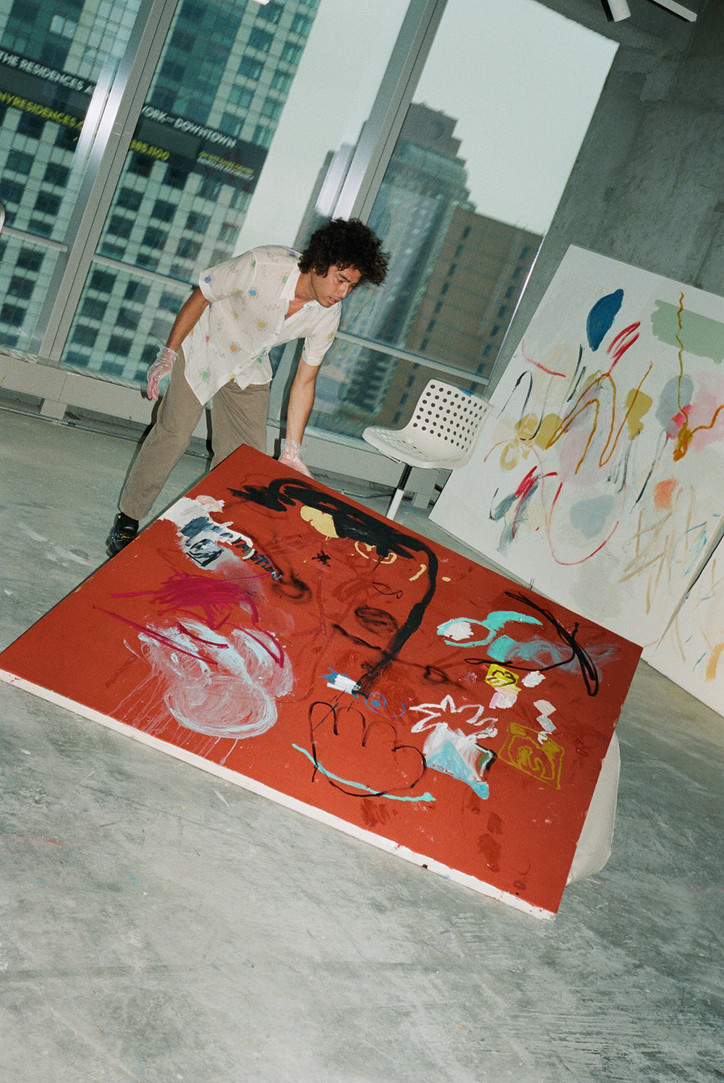
I know that you were born in Tokyo, lived in LA, and now are practicing in New York— really in New York, at that, having been in the One World Trade space for a while.
Thinking back to why I became interested in art, I always go back to Japan. My mom's Japanese, and my dad's an author, and we lived in Tokyo for 11 years. I grew up as a Japanese person. In Japan there's a lot of tourism now, but where I was growing up, I was truly the only half-American person around. There is a really high bar in Japan for things that are given to the public as cartoons, things for kids to intake. I was exposed to a lot of comic books, full of skillful drawings and storylines that were not purely violent— and actually had Buddhist influence. The superheroes in Japanese comics, or some of them, are seen “quieting the mind”, pointing at their heads and getting and Zen-ed out.
Ah, Dragon Ball Z.
Exactly. That was my main influence. It's similar to watching a tennis player. It's always about that “focus”, and pointing at their head… Early on, in high school, and applying to college, I was thinking about all of my peers, how these people seemed to be naturals at math or science— the traditionally successful roles. So I had to ask, "What am I? What do I feel like I have an advantage in? What’s my edge?" Because it is a competition in life. If you succeed at something then that’s your opportunity. And with art, I feel like I've always been ahead in a way.
The first thing that jumps out when I look around at your work today is this truly incredible palette. The hardest thing for me to get my head around in art school was color theory. The way you use color seems so thoughtful— how did your creative process develop?
With color theory, when you first start painting, you just buy the primary colors, but the longer the continuation of the experiment is all about readjusting. Every time you paint it's a synthesis of all your successes and the materials that you like. It's a combination of all these little techniques too, in order to make a good painting. So with color, it's kind of been a building process.
What’s your favorite color?
[AR points to a streaky blend of green and blue]
My favorite colors are ones that are a mixture— the moments where it's kind of gross and grimy, almost not artful. Ten years ago, if I was painting, doing stuff like that, it would've been everywhere. There is an elegance, an unconscious movement towards “oh, this blue and that green” that happens without really trying, and those are the colors that you rub out together.
In the full process of making a piece, color choice and beyond, how much do you plan it out? How much is strategy and how much simply “flows”— for lack of a better word?
With all my paintings, I try to convey a sense of tenderness. It has to come from a reflective, slowed down feeling— I think of it as opening up your heart in a way. Sometimes you don't feel like being sentimental or emotional, and we can't get into that channel all the time, or care to. But that's what painting requires from you. Thinking about life, relationships, and the temporality of things. Those feelings have to be in your space so that the lines can be tender in that manner.
It probably involves a lot of mindfulness, and life balance, involving emotion in your career. Are there other mediums that you seek for inspiration? I hear you play guitar.
I'm annoyingly interested in music, but honestly, I kind of cringe when I hear artists talk about music. I try to talk about the paintings without bringing in music, but sometimes before I go paint or do anything like that, I need to calm down. I just play guitar, just soloing over music, improvising. I like to think that it does make your brain more lucid. Painting, for me, I have to get into a zone. I have also taken on a 24 hour job of watching YouTube videos. Lately, it’s David Foster Wallace interviews.
I’ve definitely been down that wormhole before. It’s wild watching the way he uses language so carefully, in real time, and also seeing his neuroses in full force.
I have been thinking, in poetry, whether it be David Foster Wallace, or Conor Oberst, it really is so much about carefully combining very separate seeming ideas, like, "Oh, I'm thinking about my mother's house, but then I'm thinking about this nuclear explosion." I see a parallel with that in painting— you could just do an easy, quick brushstroke, or you could start slowing down. You can dig in and say, "With this one line, I'll create the tension and edges, and the next line is going to come really close, but not touch it." There is function when you feel it more.
Absolutely. It comes out in the pacing, texture, and where you allow for clean spaces or choose to add something rough. Again, intention. And focus!
Yes. So on focus, part of my backstory is that I went to UCLA. And I decided to put the digital work on hold. I mean, it's fun, but when you're doing many things in different genres, it's hard to charge forward with one idea. Since, I don't care so much about what seems “exciting”— I've made up my mind that I'm just going to paint, to push that, and hack away at it full force. This, today, is as much as I've ever painted.
That, I think, is the move. Creating and clearing a path for yourself, building a strong foundation for your practice. It seems to be the key to success for so many artists and their growth process.
With focusing on one thing, though the high of it is subtle, I am learning that the satisfaction aspect is in things like having my solo show open in Sweden soon, which will be at Loyal Gallery in January, or having a good painting do really well. The reward is a little different, and there’s not confetti everywhere, but it is a quiet satisfaction.
